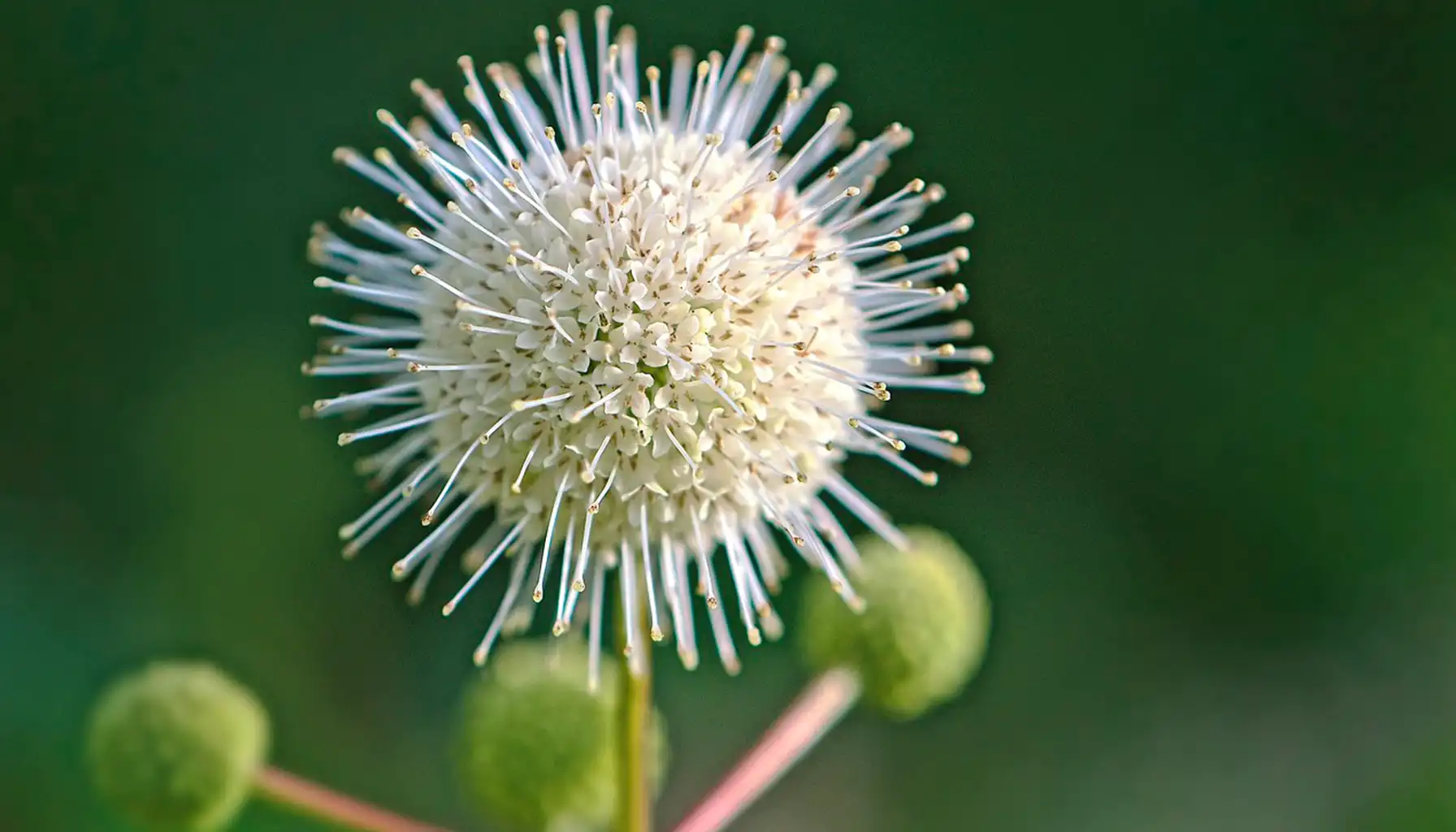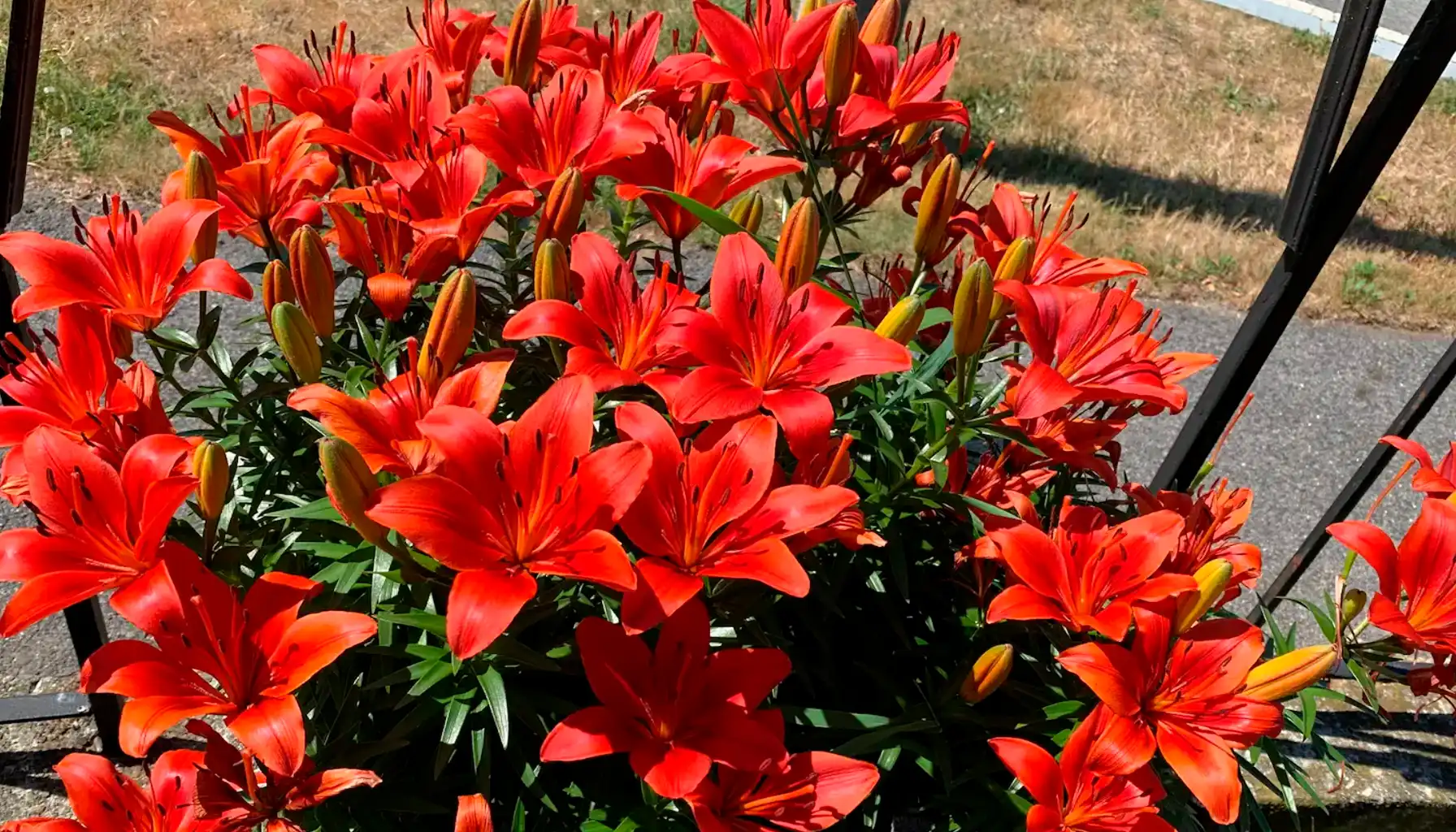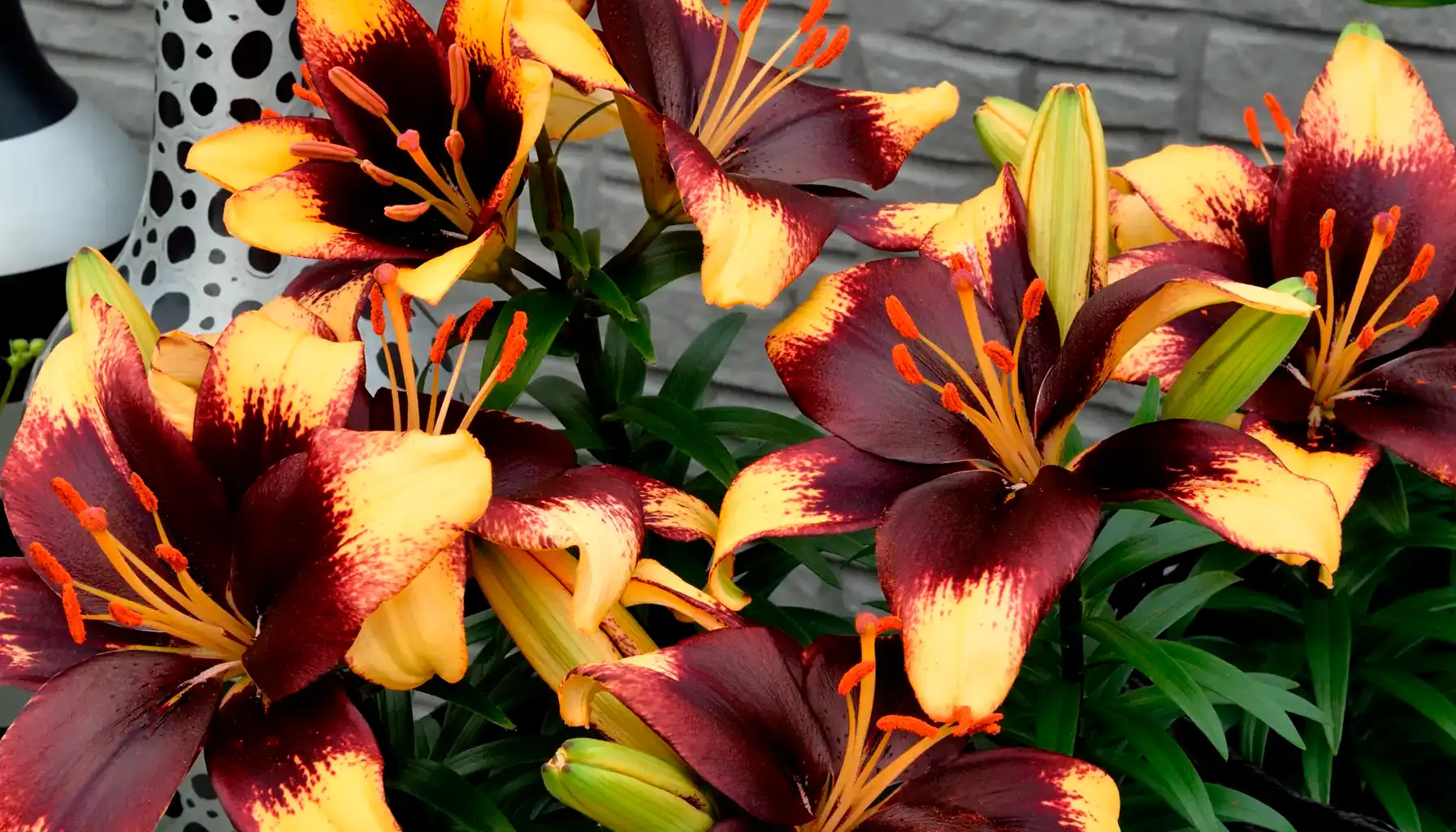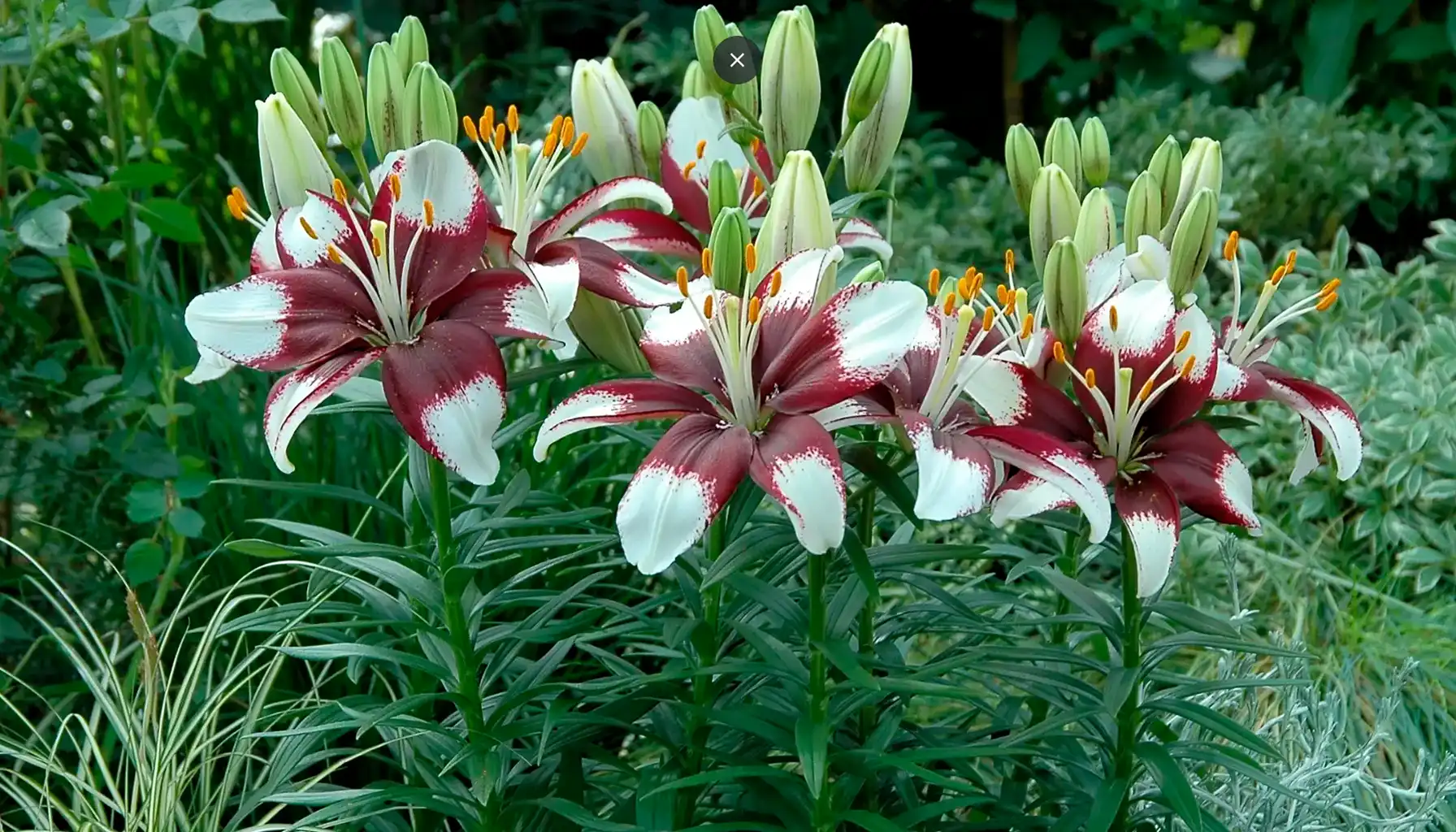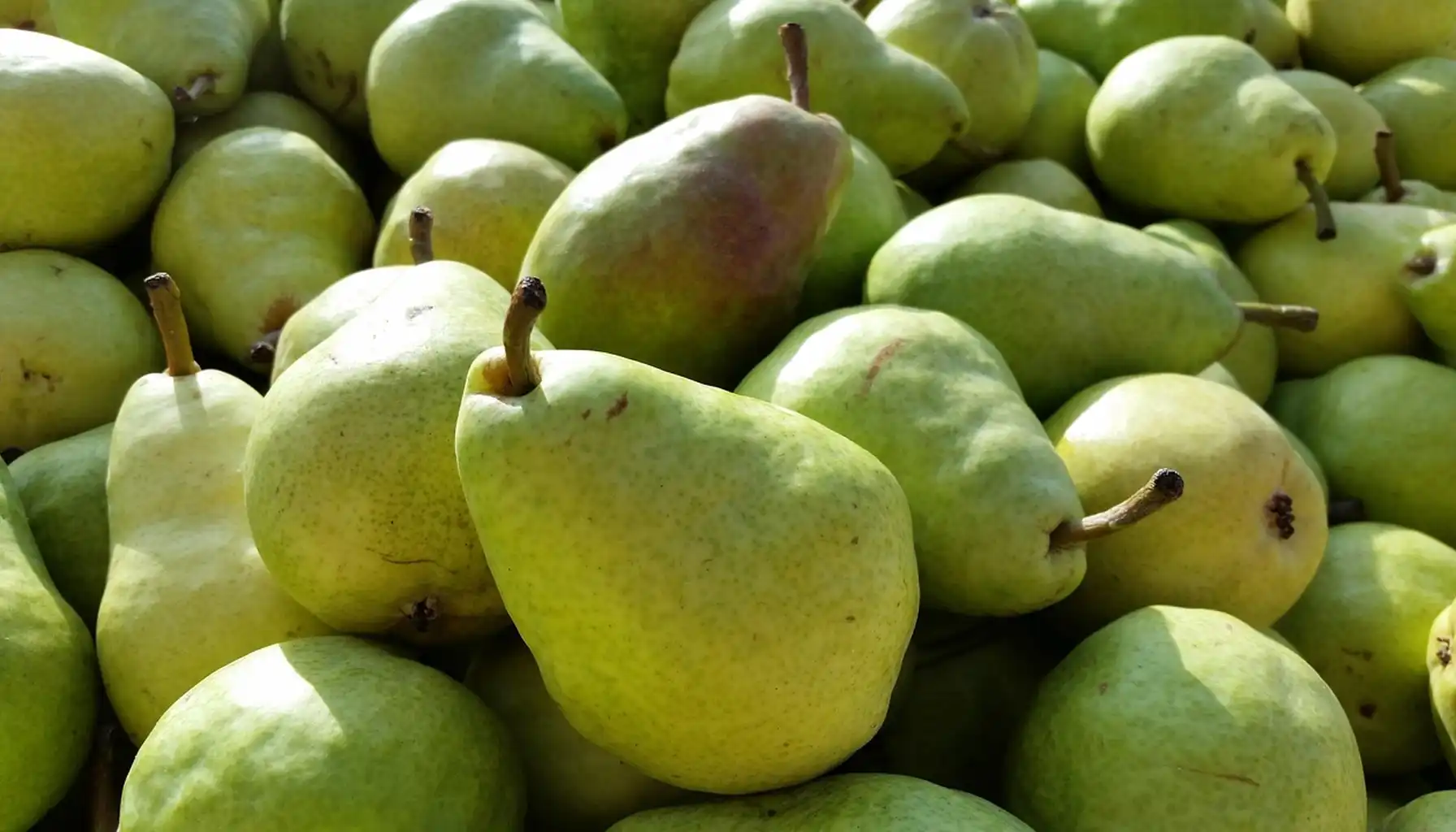A lily asiatic is among the first lilies to flower in the season, usually opening in late spring or early summer, long before Oriental lilies. These hybrids brighten borders, containers, and cut flower arrangements with little effort.
This plant is pretty approachable for beginners. Unlike some fussier lilies that need specific soil or careful staking, Asiatic lilies can live in different garden conditions.
You can track the health of your lily or any other plant with flower identification. Just point a camera of your phone at anything growing in your garden and the program will tell you what it is, the hydration and light levels, possible diseases and how to take care of it.
The flowers themselves are usually unscented, it is a trait that makes them ideal for people sensitive to strong perfume. If you need a flower with a stronger smell, look at the Best Fragrant Plants for Outdoor Spaces: Top 10 list. Yet the lilies have some beautiful colors: pure white, fiery orange, deep red, pink, and even near-black shades.
Bulbs & Plant Structure
Asiatic lily bulbs are made of fleshy scales stacked around a central core, storing enough energy to push up strong stems and large flowers each summer. Healthy bulbs are firm to the touch and free of mold or soft spots.
Stems of asiatic lily plant can grow from 2 to 5 feet tall, remaining lush until frost. Each stem produces several buds, opening in sequence. Asiatic stems are sturdy enough to stand without staking.
Set the bulbs too shallow, they risk heat stress in summer and frost damage in winter. Too deep, and growth may be delayed. A general rule is to plant bulbs about three times as deep as their height, but spacing can also be adjusted depending on soil and climate.
Recommended Planting Depths for Asiatic Lily Bulbs
Zones 4–5 | 6–8 inches | Protect with mulch for winter survival |
Zones 6–7 | 6 inches | Standard depth for reliable growth |
Zones 8–9 | 5–6 inches | Slightly shallower to avoid excess heat stress |
Flowers & Meaning
An asiatic lily flower is upright-facing, usually with six wide petals that curve slightly at the edges. Each petal can measure 4 to 6 inches across and has a star-like form. The centers are freckled or streaked. Blooms appear in early summer, lasting several weeks. With multiple buds per stem, the display can stretch into midsummer.
Unlike Oriental lilies, Asiatic varieties carry little to no fragrance. For some gardeners, this is a benefit, the lack of perfume makes them suitable for people sensitive to scent and perfect for indoor arrangements.
Across gardening traditions, asiatic lily meaning is linked to purity, passion, and renewal. White varieties are often tied to innocence and sympathy, while red shades symbolize deep love or respect. Yellow tones: joy and celebration, while orange varieties mean energy and warmth. For this reason, Asiatic lilies are as popular in bouquets and ceremonies as they are in garden beds.
Colors & Varieties
Ssiatic lily colors dominate summer borders and bouquets:
The orange asiatic lily works well in mixed plantings with blues and purples. Breeders have introduced varieties like ‘Forever Susan,’ which blends deep orange centers with purple tips
The white asiatic lily has a clean look that fits both modern landscapes and traditional cottage gardens. White varieties are especially popular for weddings and sympathy arrangements
A red asiatic lily saturated petals symbolize love and respect
Shades of pink asiatic lily remain favorites for home gardeners because they fit into almost any color scheme
Sunny yellows brighten borders as well. Yellow asiatic lily varieties has warmth and balance when paired with cooler shades
The purple asiatic lily has a regal touch, but a black asiatic lily can be just as striking as brighter tones
Some catalogs even list a asiatic lily blue, though in reality these are purple shades marketed as blue, true blue lilies don’t exist.
Compact growers deserve attention too. A dwarf asiatic lily produces full-sized blooms on shorter stems, they are ideal for containers or the front of borders. Specialty forms like tiny lion asiatic lily and tiny parrot asiatic lily fall into this group.
Orange | ‘Forever Susan’, ‘Apricot Fudge’ | Energy, warmth | Borders, focal points |
White | ‘Navona’, ‘Polar Star’ | Purity, sympathy | Weddings, formal gardens |
Red | ‘Blackout’, ‘Matrix Red’ | Love, respect | Bouquets, bold beds |
Pink | ‘Lollypop’, ‘Rosella’s Dream’ | Joy, playfulness | Mixed borders, containers |
Yellow | ‘Connecticut King’, ‘Grand Cru’ | Cheer, optimism | Sunny beds, cut flowers |
Purple / “Blue” | ‘Purple Dream’, ‘Dimension’ | Luxury, rarity | Accent planting |
Black | ‘Black Charm’, ‘Landini’ | Drama, intensity | Modern or contrasting schemes |
Dwarf / Tiny Series | ‘Tiny Lion’, ‘Tiny Parrot’ | Compact beauty | Pots, edging |
Care Guide
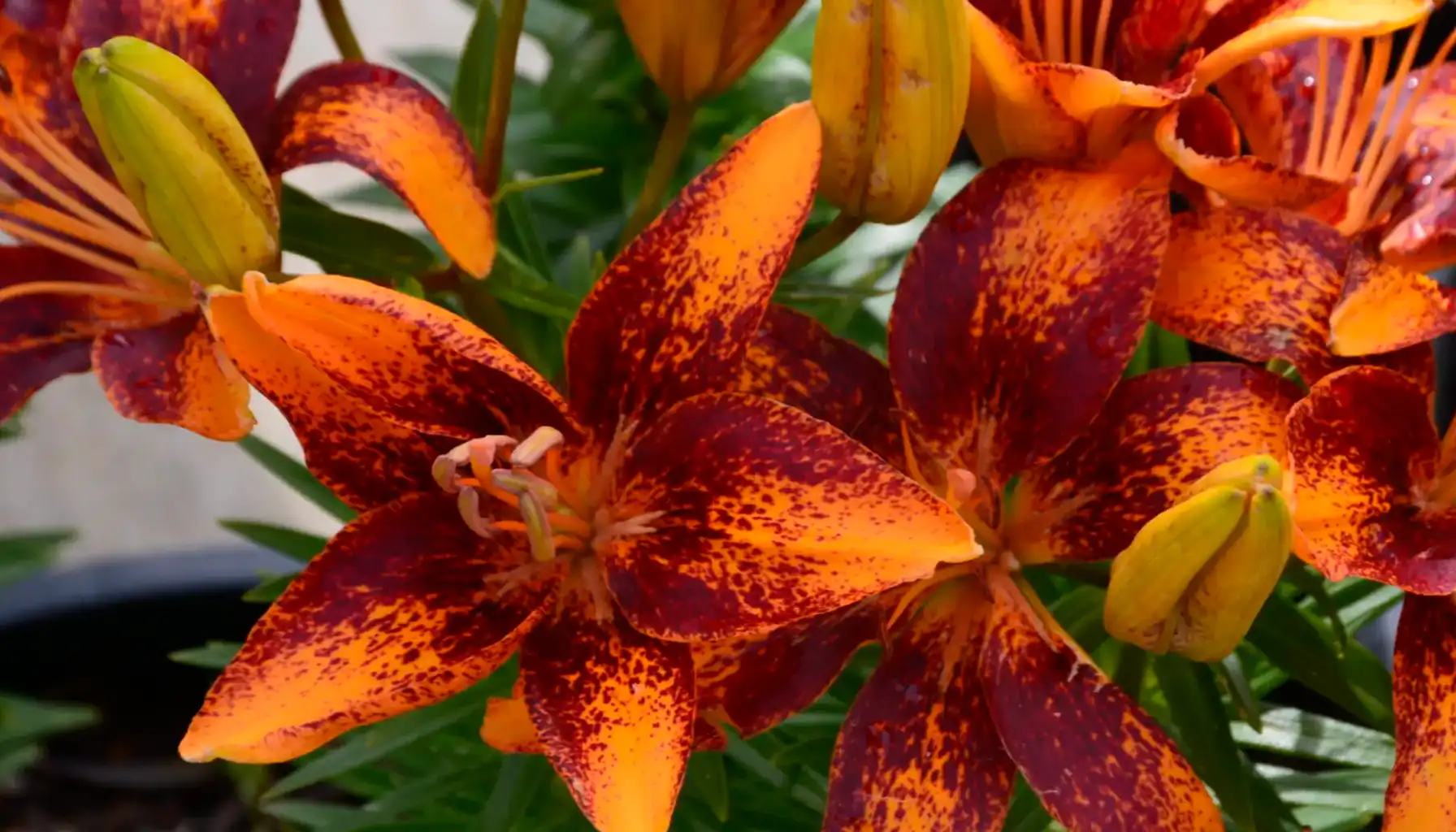
Proper asiatic lily care has three essentials: sunlight, soil, and consistent watering. Plant them in a location that receives at least six hours of direct sun daily, though a touch of afternoon shade is helpful in very hot regions. The soil should be moist yet well-drained, enriched with compost or organic matter to avoid waterlogging. They can grow in full sun but tolerate partial shade, adapt to different soils (if the drainage is good) and return year after year in USDA zones 4–9. The flower can’t grow in a complete shade, still, you would need a different plant for it. Read more on that in the article Best Shade Loving Plants and Flowers That Thrive in the Dark. The bulbs steadily multiply, giving you more stalks and flowers over time.
Because they are a asiatic lily perennial, these bulbs return year after year when treated well. After blooming, allow the stems and leaves to remain until they turn yellow and wither naturally. It feeds energy back into the bulb, ensuring stronger flowers in the next season. Cutting back foliage too early can weaken plants and reduce bloom quality
Applying a balanced, slow-release fertilizer in early spring, just as shoots emerge, supports strong growth. A second light feeding as buds form can improve flower production. Always avoid high-nitrogen blends, which promote leaf growth at the expense of blooms
Watering should deliver about 1–2 inches of moisture per week. Direct water to the base of the plant to keep leaves dry and reduce disease risk. Mulching with straw or shredded leaves helps retain soil moisture and regulate temperature
Step-by-Step Care Checklist
Plant bulbs 6–8 inches deep in well-drained soil
Choose a sunny site with at least 6 hours of direct light
Water regularly — about 1–2 inches weekly
Apply fertilizer in early spring and again midseason
Mulch to keep roots cool and soil moist
Deadhead flowers after bloom, but keep stems until they yellow
Divide clumps every 3–4 years to prevent overcrowding
Growing in Pots & Containers
Not everyone has space for long flower beds, but Asiatic lilies adapt beautifully to container life. You can grow an asiatic lily in pots but you would have to choose a container that’s deep enough to accommodate bulbs at their proper planting depth, about 6 inches of soil above the bulb, while still leaving room for root growth.
Select pots with multiple holes, and use a well-draining mix amended with compost. Plant bulbs in groups of three or more. Compact cultivars and dwarf series are especially suited to pots because they don’t overwhelm small spaces.
Container growth can influence asiatic lily height. Full-sized varieties typically reach 3 to 4 feet in the ground, the same plants may stay slightly shorter in pots because of limited soil volume.
Use a pot at least 12 inches wide for three bulbs
Water daily in hot weather, since containers dry out quickly
Fertilize lightly every 4–6 weeks with a balanced slow-release blend
Rotate pots weekly so stems grow evenly toward the sun
Once blooms fade, allow foliage to yellow before cutting back
Propagation Methods
One reason these hybrids remain popular is how easily they multiply. Over time, a single planting expands into a cluster, but you can also encourage new plants through several techniques.
The most straightforward method is division. Every few years, dig up mature clumps in early fall, separate the bulbs, and replant them at proper depth.
Bulblets provide another route. Small bulbs form naturally along the stem just below the soil line. When lifted and replanted, they develop into flowering plants within a couple of years.
Similarly, scaling, removing a few outer scales from a bulb and rooting them in damp peat moss creates baby bulbs that can be grown on.
Keep in mind, though, that hybrids won’t always resemble the parent plant, and flowering can take three to seven years.
Propagation Methods & Difficulty
Method | Difficulty | Time to Flower | Notes |
Division | Easy | Next season | Quickest way to expand and refresh clumps |
Bulblets | Easy to moderate | 2–3 years | Form naturally along buried stems |
Scaling | Moderate | 2+ years | Needs humidity control for rooting |
Seeds | Challenging | 3–7 years | Traits unpredictable in hybrids |
Common Problems & Solutions
Among insects, the red lily beetle is the most destructive. Both adults and larvae chew leaves and flowers, leaving ragged holes. Hand-picking and neem-based sprays usually keeps them under control.
Aphids are another pest, clustering on stems and buds. Rinse them off with water or treat with insecticidal soap.
Diseases often strike in damp conditions. Botrytis blight shows up as brown, water-soaked spots on leaves and petals. If left untreated, it spreads quickly.
Improve airflow, remove infected parts, and use an organic fungicide if needed. Basal rot, caused by soil fungi, leads to mushy bulbs and collapsing stems. Avoid overwatering and always plant in well-drained soil to prevent it.
Environmental stress can mimic disease. Yellowing leaves usually show poor drainage or too much water, while scorched tips often point to excessive heat or sun without adequate moisture.
Symptom | Likely Cause | Solution |
Holes in leaves | Red lily beetle | Hand-pick insects, apply neem spray |
Sticky residue on stems | Aphids | Rinse with water or use insecticidal soap |
Brown spots on leaves | Botrytis blight | Remove affected leaves, improve airflow |
Bulbs soft and rotting | Basal rot | Improve drainage, discard infected bulbs |
Leaves turning yellow | Overwatering | Reduce watering frequency, loosen soil |
Overwintering & Long-Term Care
Once established, they handle cold winters in much of North America with minimal protection. In fact, they can survive temperatures as low as –35°F when planted at the right depth.
In late fall, after stems have yellowed and died back naturally, trim them to just above ground level. Then spread a 2–4 inch layer of mulch (straw, shredded leaves, or pine needles all work well). This blanket keeps the soil evenly cool, prevents bulbs from heaving during freeze-thaw cycles, and protects developing shoots.
In warmer regions, mulching is still helpful, because it regulates soil temperature and moisture. Avoid heavy, soggy mulch, which can encourage rot.
Bulbs multiply underground. A clump that begins with a handful of bulbs may double or triple within a few years. This produces more flowers, but it can also lead to overcrowding, which reduces bloom size and vigor. Dividing every 3–4 years in early fall keeps plantings healthy.
Conclusion
Asiatic lilies can grow in climates as cold as zone 4 and as warm as zone 9. The bulbs multiply year after year. A single planting can turn into a larger display with very little extra effort. If you planted it at the proper depth, added a bit of mulch in winter, and occasionally divided them, these lilies will keep returning stronger each season.
They are a great addition to any garden in summer, you may also want to plant something for the fall beside them: read Must-Grow Flowers for Fall: What Flowers Are Best for the Fall Season?
For beginners, they’re forgiving and easy to grow, a reliable foundation for colorful designs and bouquets. Plant them once, care for them well, and they’ll reward you with decades of color and elegance.
FAQ
Do Asiatic lilies bloom more than once a year?
No, each bulb produces one set of flowers per season. The blooms stay for several weeks. After they fade, the plant stores energy for the next year.
Do they multiply in the garden?
Yes, bulbs reproduce underground, forming clumps that expand over time. Dividing every few years prevents overcrowding and keeps flowers large and healthy.
Do they come back every year?
Absolutely. These hybrids are hardy perennials, returning reliably in zones 4–9 when planted at the right depth and given winter mulch in colder areas.
How long do flowers last?
Individual blooms last about a week, but since buds open in sequence, a stem can stay in bloom for up to a month.
Are there really blue Asiatic lilies?
Catalogs sometimes advertise a so-called asiatic lily blue, but true blue lilies don’t exist. What’s sold under that name is usually a purple variety with bluish undertones or edited photography. Gardeners should be cautious of misleading descriptions.
What can I do to keep them blooming well?
Plant in full sun, water consistently, feed with balanced fertilizer in spring, and leave foliage intact until it yellows naturally. These steps ensure bulbs recharge for the next season.
Related AI Plant Finder Posts
